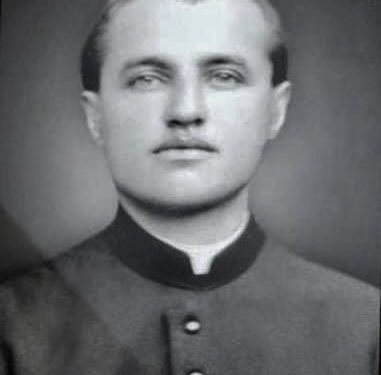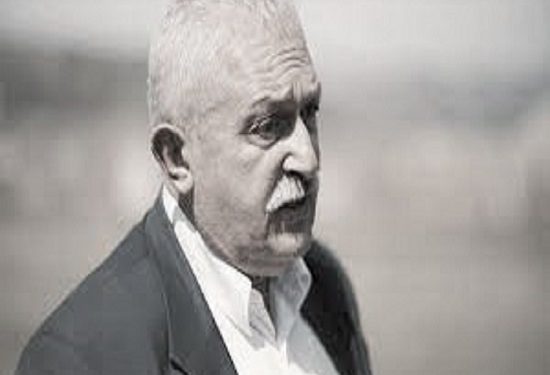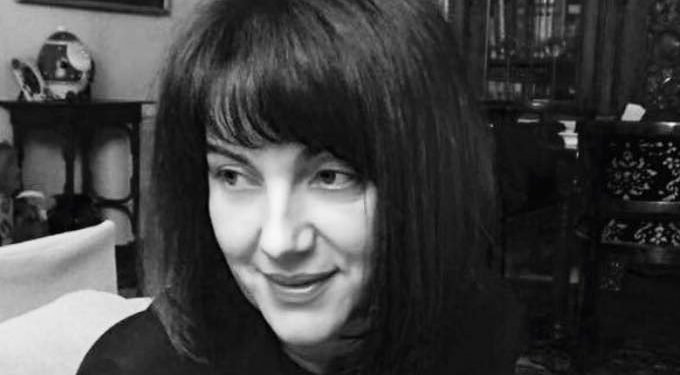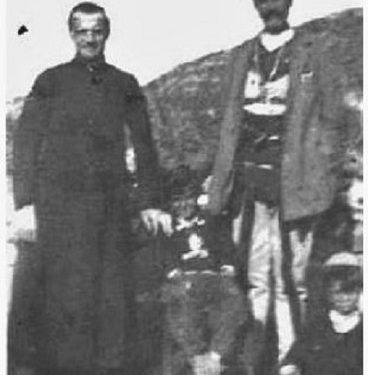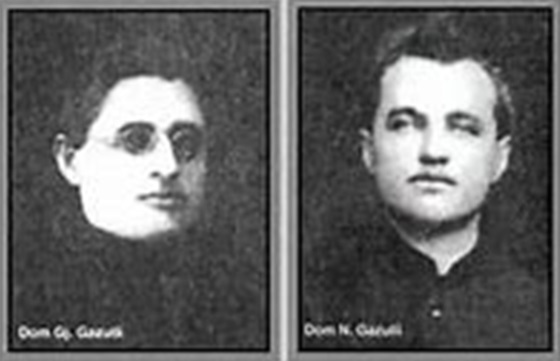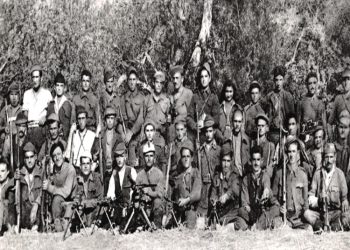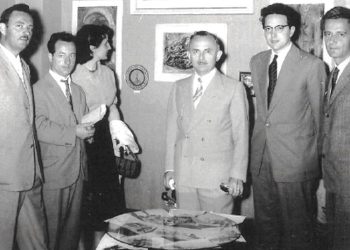By Marcel Hila
Memorie.al / Dom Nikollë Gazulli, Franciscan Catholic priest, prominent among the most learned among them. He collected the popular wealth and published it in the magazines of the time. Of great value is the publication by him of “Fjalor i Gegnishte” in 1941, in the magazine Visaret e Kombit – a work, which not only summarizes and inventories words of the Albanian language, from the deep areas of the Northern Highlands, but also testifies its self-developed and natural form, at that certain historical stage, without the formalizing interventions that were imposed later as a result of the standardization process.
Already during the reign of King Zog, Dom Nikollë Gazulli was sentenced to life imprisonment in Gjirokastra prison, while his brother, Dom Gjoni, was sentenced to death and executed by hanging. Thanks to the intervention of the great national priest and poet Gjergj Fishta, Dom Nikolli’s life was spared.
With the coming to power of the communists, he became the target of their persecution and his fate is not known nor where his body ended up after death. The priest who collected in the dictionary the wealth of the Albanian language of Northern Albania, as he called it… but he is still without a grave!
Enkelejda Shamku, researcher, Albanianologist, testifies
Good afternoon, Mrs. Enkelejda. You have expressed your willingness to make available to us everything you know and have been able to verify regarding the priest Dom Nikollë Gazulli.
By profession I am a language researcher, Albanianologist. Working on a series of dictionaries from the period since 1954, I found a dictionary with rare words, published in 1941 in Visaret e Kombit, by Dom Nikollë Gazulli: The Dictionary of Gegnishte, of Northern Albania, as he called it.
I did not know who Dom Nikollë Gazulli was. The dictionary was ready in the 2005 Kshnellat, but I also needed a photo of Dom Gazulli. I went to Father Zefi, who connected me with a distant tribe, of Dom Nikolli in Shkodër, Edmond Gazulli, a teacher. He was the one who found and brought me some photos of Dom Gazulli.
When I asked him where Dom Gazulli rested, he told me that it was somewhere at the graves of Rrëmaj, but when we asked to be more precise, it turned out that there was the grave of Dom Gazulli’s brother, Dom Gjon, who was hanged by Ahmet Zogu. I noticed that even in the publications, Dom Nikolli disappeared for 4-5 years. At the time when they hanged his brother, they took him and took him to Gjirokastra prison, sentenced to life imprisonment. Fishta had intervened to secure his life’s pardon.
I asked everyone I could if they knew where Dom Gazulli might be buried, but to no avail. Then I went to Father Zefi and told him that I should go to the mountain, to Shkrel, to ask. When we went to Shkrel, one of the residents who took care of the church, told us that it was said that Dom Nikollë Gazulli had killed in Vrith, a person who brought him bread every day – Nikollë Prekusha, from Vrith.
Yes, such words have circulated, but it is also said that this variant is not true! It is about the time after the end of the Second World War, when the communists came to power and Dom Nikolli was forced to hide, because they wanted to capture and execute him.
Yes! It is said that he stayed in one place for two or three days, when he came out to Fushë Lugje, that the Pursuit Forces had come to capture him. I also took a picture of that place: it’s like a hole big enough to hide a fox. Ivanaj, has put a juniper cross there, as tradition wants. After he left there, he went to Vrith and there they gave him bread. There are rumors that Preng killed Nikollë Prekusha.
They say they found many bullets in his flesh, no blood, only one bullet with blood on his forehead. Some say he killed himself, but a priest is not allowed to do that, so this version is not reliable.
After they had found him, they had dragged him in a cart and taken him to Stërkuja church. They had ordered to bury him there, leaving no trace. However, the boys who buried him had their own parish and left stones around to identify him.
Then, Dom Pjetër Gruda, the last vicar of the church, took four men and with their faith, they wanted to secretly remove him from there, to take him to Shkrel. It was about the church, at the altar of Shna Ndou, where it is said that they opened the boards and put him in.
From the data we have collected, it is known that Dom Nikolli sheltered Dom Lazër Shantoja on November 28-29, who, as a friend of Mustafa Kruja, was targeted by the communists who were trying to capture him. They were well aware of the methods used by the communists and were afraid that if the communists caught him, they would torture him. And it really looked like that and worse.
When Dom Lazër Shantoja fell into the hands of the communists, a certain Isuf Mersini together with Vaskë Koleci cut off his legs and broke his arms. The convict was still alive lying on the ground with his back to the ground. Under these conditions, Colonel Esat Ndreu – president of the Shkodra District Military Court, Dali Ndreu’s brother – gave the death sentence: The condemned man was beheaded, lying on the ground and the colonel saw him and sentenced him to death.
I had heard that he had been tortured, in front of his mother!
According to the rule at the time, the family had the right to see their condemned relative after the death sentence was handed down. His mother, Lucia, went and found him with worms in his body and covered in excrement, because they did not move him even for personal needs.
When he smelled the stench of decay, he realized that his body was rotting…! He himself asked his mother to tell them to kill him, because he couldn’t do it anymore. The mother went to Zoi Themeli – the first chairman of the People’s Protection section – and begged him: “Please, kill me, because the boy can’t stand it!”
But they didn’t kill him, because they had orders from Enver Hoxha, that maybe he could know about Mustafa Kruja and Malik Bushati. They took him to Tirana together with Sulço beg Bushati.
After they had tortured them until their flesh had bled, they had wrapped them both in the same blanket, and their pulpy flesh had stuck to each other. In the book “From the vulture with the crown to the sickle with the hammer”, Beqir Ajazi says that in 1945, they were sent to the Tirana prison, which today is known as the “House of Leaves”.
Their wounds had healed. There was no greater pain: from an 80-year-old old man, to lose 52-year-old Dom Lazrin! They screamed – a pain that had no voice! After seeing that they couldn’t get anything out of Dom Lazri, they killed him on February 19, 1945. Today, Dom Lazri was declared a martyr. There were 67 files full of evidence, but they were lost…!
Regarding Dom Nikollë Gazulli, I have spoken with Dom Vlashi and he told me that he is sure that Dom Gazulli is not resting in Shkrel, but in Dedaj. It is in the church in Dedaj, not in Shkrel. However, all the places that have been mentioned as possible places where they could have buried him should be thoroughly verified.
I have been looking for it since 2006. I have every letter written by that man, of those that have been published of course, but I can’t find the others anywhere. He left a wonderful dictionary, which I will now reprint, up to the letter K, that I collected for the magazine “Hylli i Drita”.
He has collected songs of the highlands, church songs of the highlands before the Ottoman occupation. All very beautiful. Oh, how beautiful, I will reprint them all; none of his letters will remain unpublished. His letters are outstanding! Dom Gazulli was the most knowledgeable among the Franciscans.
I have the impression that Çabej met him, because in a small agenda of Çabej, among the phone numbers, when he was in Rome, Gazulli’s number is also there. At that time, Gazulli was studying in Rome, as he completed half of his studies in Innsbruck and half in Rome. He is known for the very important research on the Illyrian period. When Dom Nikolli talks about “Meshari”, he calls him; “the oldest branch of the Albanian language”.
It is our duty to find the place where the remains of these martyrs are and to build them a resting place worthy of their work in the service of our nation and to leave to the new generations the respect for these learned people, as well as for all those who contribute to the national cause, regardless of dress or affiliation.
Thank you, madam, for your help in the search for the bones of dom Nikolle Gazulli!
Thank you. Memorie.al




